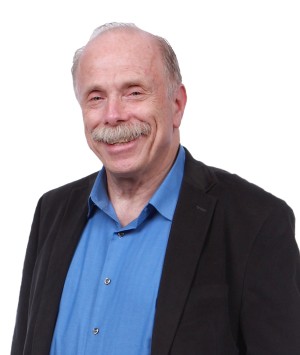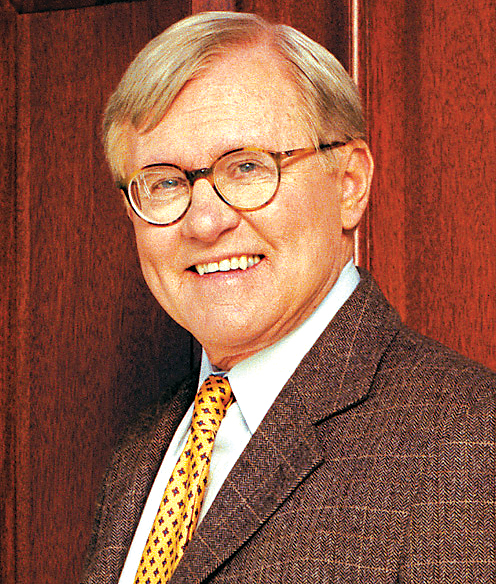David Dixon
Title: Vice President of Urban Places and Planning and Urban Design Leader, Stantec
Age: 70
Experience: 43 years
After studying history, architecture and economics, David Dixon discovered his talent for design by chance and has been following that passion ever since. He’s won numerous awards for his planning and architecture work and has written several books; he co-edited the recently released “Suburban Remix: Creating the Next Generation of Urban Places.” The book is written for anyone who lives in, works in or cares about the future of real estate in suburban America, he said. More recently, he’s been following his newfound passion, spending time with his 4-year-old grandson, Giacomo.
Q: How did you get into urban design?
A: I went to the College of Social Studies at Wesleyan University. That was an inter-disciplinary program focused on government, history and economics. Then I went to graduate school at the University of Pennsylvania and studied architecture. It turned out I was a much better designer than I thought I was.
However, I really missed understanding the story behind the paces we were creating. How did they fit into the great issues shaping our society? Why were cities in such steep decline? It occurred to me that it was going to take a lot more than great place-making to turn that around.
In 1972 I went to the Urban Design Center at Harvard because it was a chance to meld my interests. After a year and a half, I graduated and ultimately got a job doing high-speed rail up and down the northeast corridor. That’s when I understood there was a role for me in urban design, connecting the dots between politics, history and economics.
Q: What do you mean by “placemaking?”
A: Urban design. Creating places in which people can thrive economically, socially, environmentally and all other ways we need to thrive. When we make places, we need to understand all the forces that shape the kinds of lives people have.
Q: Is it harder to do that in a built environment like Boston than someplace with more of a blank canvas?
A:In a lot of ways, a built environment is easier because there are fewer unknowns. You know what the real estate economics are, where the jobs are, where the amenities are. There are a lot of building blocks.
A good example is One Charlestown. That was built as public housing in the late 1940s, I think. It’s kind of a barracks-style neighborhood intended to be separate from the rest of Charlestown. It presents lots and lots of clues to create a plan. How do you take what is, in effect, two Charlestowns and make them one? There physical dimensions to it, like connecting streets. There are design dimensions. How do you design new buildings of a different scale and era in ways that relate to historic Charlestown? The streets need to be lined with front doors and stoops. You need to be able to see your neighbors coming and going.
Old Charlestown has a certain rhythm and variety of homes. That needs to be reflected in One Charlestown. Bunker Hill Street has clearly become a barrier and it needs to become a seam, which can be done with the right mix of retail to serve people of widely different incomes, which can be done.
Q: Why did you write this book?
A: This book is meant to be a how-to for suburban communities across North America that know they need to change and need to figure out how to do it. The first couple of chapters talk about fundamental demographic and economic changes in our society. Cities have become much more expensive in the last 10 to 20 years, so a lot of poverty is getting displaced to the suburbs. Suburbs are becoming more racially diverse than cities. They’ll be majority non-white before cities will be. For many years, the bulk of our population was families with kids, that was the fastest-growing demographic; starting in the late 2000s through 2040, most of our new households are singles and couples. That’s what is going to drive housing demand.
Long story short: this book looks at the forces shaping society and therefore our physical environment. This creates opportunity. All these folks are going to want smaller homes, access to a main street, proximity to work, access to transit and places that give a sense of community. Suddenly this creates demand for something that isn’t there. It’s an opportunity. It’s a market that suburbs have never had before and it’s going to drive redevelopment in a lot of these places.
I’ve always loved cities and urban places and it’s fascinating to me how more and more clients were hiring us to create urban places in the suburbs. One challenge suburbs face is that the residents moved there because they didn’t want to live in the city and words like “density” and “urban” are not welcome. Places that exhibit these qualities are not places they want to live next door to. How do you talk to folks like this? How do you get them to embrace the qualities that are probably going to rescue their community and have positive impacts on their quality of life? The change that’s coming isn’t going to affect a blade of grass on their front lawn, it’s going to replace that embarrassing, tired old shopping mall that’s been sitting vacant.
Q: Is the book an attempt to get suburban NIMBY residents into the redevelopment camp?
A: Look at Cambridge. They rebuilt all their schools with proceeds from redeveloping Kendall Square. People fought it and then took it to the bank. I find it interesting how much people have given up on suburbs. We couldn’t fit our future into suburbs no matter how much we wanted to. Suburbs, in fact, offer today some of the best opportunities to create the kind of cool, walkable, urban, diverse, mixed-use, highly-amenitized environments we all know people want and developers love to create. Cities are harder places to create them. The opportunity is there but the biggest challenge in the suburbs is probably leadership experience in projects like this. Cities are often much more experienced at putting together the kinds of public-private partnerships that unlock transformative projects than suburbs are.
As suburbs learn to do this and the development community comes to appreciate the opportunities that suburbs offer, I think we’re going to see a real era of suburban renaissance. The era of suburban growth by sprawl is over. All the underpinnings are gone. A very different era of growth shaped around all these grayfields, which are the least valuable real estate class out there. They’re waiting for us to bring them back to life.
Five Neighborhoods Dixon Could Imagine Living in:
- South End, Boston
- Park Slope, Brooklyn
- Bywater, New Orleans
- Capitol Hill, Seattle
- Carmel, California






